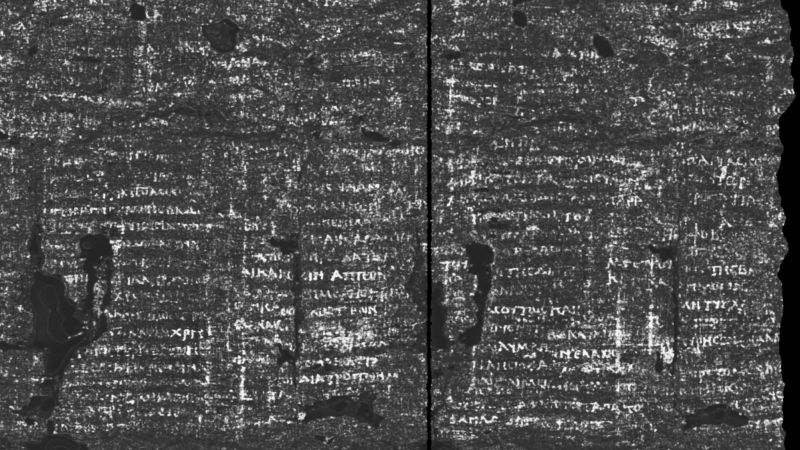The pursuit of knowledge and understanding in science often involves navigating through lost artifacts, deciphering ancient languages, and unraveling the mysteries enshrined in time. This quest is propelled by an innate curiosity that has driven countless scholars and enthusiasts alike to investigate beyond the evident. Notably, the challenging and often painstaking process of unveiling crucial discoveries can feel reminiscent of the high-stakes adventures typified by cinematic narratives such as “Indiana Jones.” Yet, unlike the action-packed escapades shown on screen, most scientific breakthroughs occur within the quiet confines of laboratories or through advanced computations on computer screens.
One of the remarkable advancements today is the deployment of artificial intelligence (AI) to penetrate the mysteries of ancient artifacts. These include delicate remnants such as the charred scrolls from Herculaneum, which were forever altered during the catastrophic eruption of Mount Vesuvius in AD 79. Recently, scholars have achieved a significant milestone by extracting initial words from these scrolls using AI. The first translated word, interestingly, was “disgust,” appearing twice within fragments of ancient Greek text. As researchers delve deeper into these texts, they are unlocking insights into the ancient Roman and Greek world, revealing socio-political sentiments and everyday concerns from millennia ago.
The journey of deciphering these scrolls, particularly the consistent archaeological initiative known as the Vesuvius Challenge, showcases a collaborative effort to decipher the rich historical context encapsulated in ash-covered remains. This project has successfully virtually unrolled five intact scrolls, revealing layers of language and thought previously obscured by time and disaster.
In parallel, scientific discourse remains vigilant toward threats posed by celestial bodies, such as asteroids. The asteroid Bennu, known to have a 1 in 2,700 chance of colliding with Earth approximately in 157 years, fascinates and frightens astronomers. Should such an event occur, studies suggest it could initiate a global winter characterized by diminished sunlight, resulting in significant agricultural and ecological upheaval for years. In addition, a recently discovered asteroid, labeled 2024 YR4, poses another near-term threat, with a 2.2% chance of impact in 2032. However, despite the dire potential consequences, experts emphasize that the odds of either scenario unfolding are still notably low.
Another aspect to consider is the importance of monitoring near-Earth objects, especially with misleading instances such as Elon Musk’s Tesla roadster mistakenly identified as an asteroid. This incident underlines the challenges faced by astronomers in accurately tracking objects within our solar system—an endeavor that is becoming increasingly critical as we enhance our understanding of space dynamics.
In archeology, the discovery of the home of England’s last Anglo-Saxon king, as depicted in the Bayeux Tapestry, illustrates how historical narratives can be pieced together using modern technology. Ground-penetrating radar led researchers to the “lost” palace of Harold II, providing significant insights into the socio-political environment during a pivotal moment in British history, namely the Battle of Hastings in 1066.
Furthermore, the fascination of lunar exploration has not waned. Recent insights, including the revelation of a massive crater on the moon’s far side, suggest cataclysmic events early in Earth’s history that shaped the moon’s current landscape. China’s ambitious plans to deploy a flying robot for exploring the lunar surface further emphasize the ongoing interest in uncovering the moon’s mysteries.
On the conservation front, the survival struggles of species like Darwin’s frog draw attention to the pressing need for intervention in biodiversity. This tiny, endangered species has seen a glimmer of hope with the birth of 33 froglets at the London Zoo.
Ultimately, science is a tapestry woven from inquiry, ingenuity, and collaboration, striving to discover lost worlds, various species, and even hidden clues from the cosmos. With every breakthrough—from ancient scrolls to modern conservation strategies—there lies a greater narrative about our world, its history, and the imperative to foster its protection for future generations.



